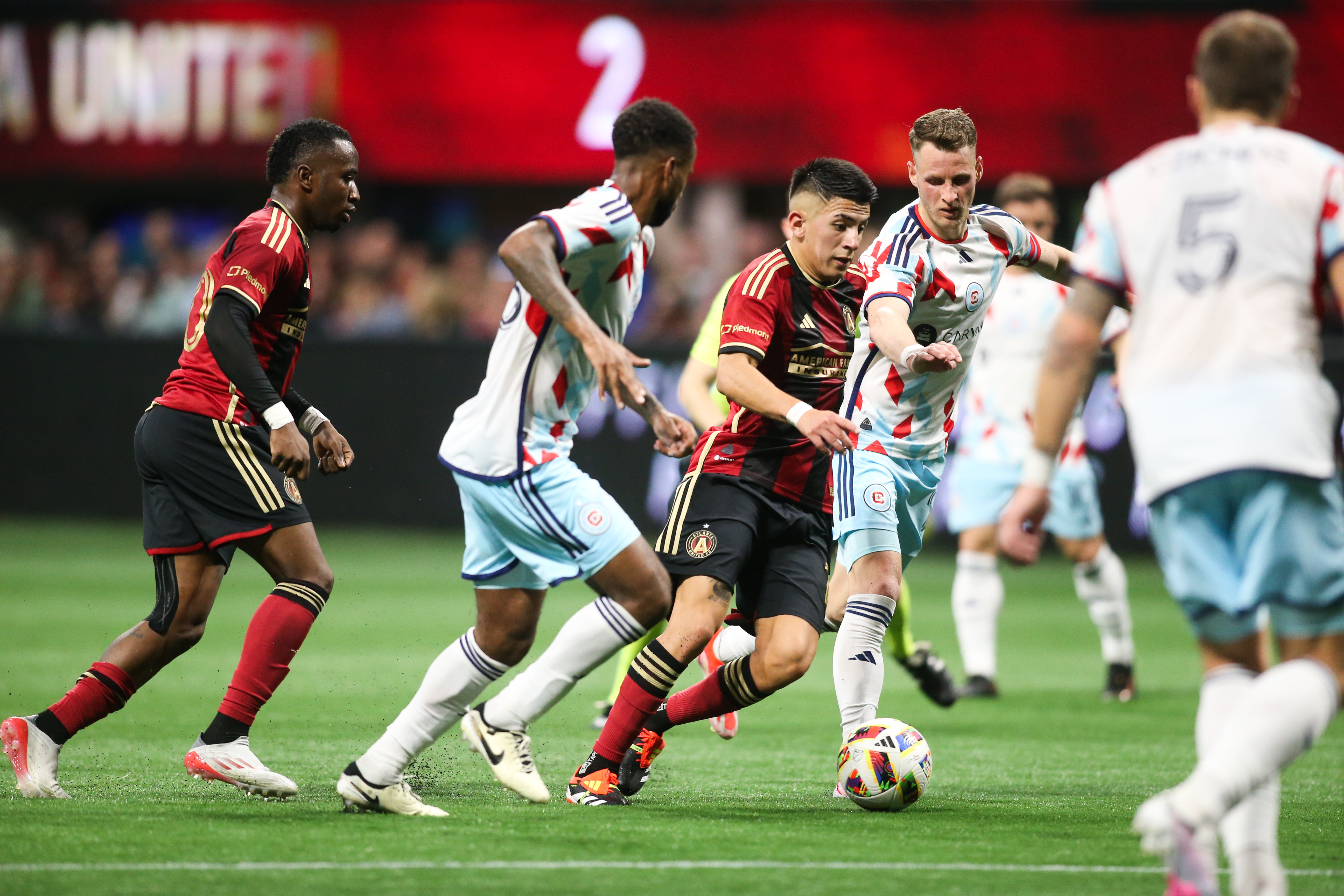The Chicago Fire entered Saturday's match in Columbus with a number of minor injury concerns and players who missed training time during the week.
The only one who didn't end up playing was Juninho, but the Fire showed signs of fatigue towards the end of the game. The Crew scored twice in the final 20 minutes and could have had more if they were more efficient in front of goal.
On top of that, sloppy mistakes killed the Fire in Ohio. All three Columbus goals were a direct result of turnovers by the Fire.
The Fire's sloppy play
After the loss, Michael de Leeuw had a pair of quotes which summed up why the Fire lost:
"I think we played well in certain parts of the game but most of all we were very sloppy. I think we had 20 unforced errors and at the end, the goals came from that, also the third goal was a mistake for me."
"We have to play better when we play possession. Just hold the ball and not make stupid mistakes beacuse Columbus profited big because of that."
Dax McCarty uncharacteristically had a pair of passes in the Fire's defensive half that were intercepted inside the first dozen minutes. Johan Kappelhof had a back header towards Matt Lampson that Artur got in the way of and had a free header on goal as a result in the fifth minute. That apparently was a sign of things to come.
Matt Polster had a pass intercepted in his own half, which led to Columbus playing in transition and scoring the first goal. The goal itself was a bit lucky with Artur's long shot being deflected right into the path of a wide open Kekuta Manneh in front of goal, but Artur's chance came from the turnover.
In the second half, Polster again was involved in a Columbus goal. His pass at midfield was intercepted, but his killer mistake was pressing the ball soon after and not winning it.
With Polster pressing, he left Columbus' left wing free to attack. That caused a chain reaction in the Fire's defense. Kappelhof had to move from his central position to close down Waylon Francis with the ball on the wing. Joao Meira slid a bit more towards the right to cover Kappelhof and mark striker Ola Kamara. Patrick Doody, the left back playing higher up the field than Kappelhof and Meira, had to track back to mark Justin Meram. Doody couldn't make up enough ground on Meram and he scored the goal.
The clip below starts right as Polster is stepping forward to pressure the ball after his turnover and fouls Cristian Martinez. To add insult to injury, Polster gets a yellow card for the foul on Martinez, a challenge he probably shouldn't have tried to make in the first place.
The third Crew goal, as de Leeuw admitted, was a result of his back pass that was intercepted. The turnover led to a breakaway for Kamara, which led to a penalty kick.
The Fire were able to win the possession battle on the road against a team in Columbus which is one of a handful of MLS teams that regularly try to hold a majority of the possession. That is a good sign that the Fire can impose their will on the game and control the tempo against even good possession teams. However, the Fire's numerous turnovers and inability to cover in transition was costly.
Lack of central attack
Nemanja Nikolic is one of the best finishers in MLS. That's why he has 16 goals so far this season.
However, he has not shown a regular ability to create his own chances. He is great at finding ways to get open near the goal, being in the right place at the right time and being efficient with the chances he gets. He is not great at much else.
So when Nikolic isn't scoring, and he hasn't in five matches, it's at least partially due to the lack of chances the team is creating for him. Nikolic hadn't gone more than two matches without scoring and hadn't gone consecutives games without scoring since Bastian Schweinsteiger arrived before this drought.
Teams are starting to learn the Fire's weakness in attack, which is to clog the central areas and force them wide. New England did that last week and Patrick Doody burned them with three assists. If Doody or Polster aren't going to create chances, the Fire's attack is suddenly in trouble.
Check out this chart, courtesy MLSsoccer.com, of the Fire's key passes, passes which led to shots. McCarty's assist is in blue. Passes were taken from the player's number and were received at the arrows.
Passes that led to Fire shots came from a corner, three crosses, two passes far from the goal, two backwards passes from outside the box and McCarty's chip into the box from distance, which was similar to a cross.
For comparison, check out the Crew's key passes. There are more forward passes from advanced central areas. Even the backward pass from Kamara (No. 11) comes from well inside the box.
This has become the Fire's weakness as more teams have seen how to successfully defend the Fire. Not every team in MLS can defend well enough to stop the Fire, even if they successfully force them wide. New England is a perfect example. The Revolution limited central chances but still gave up four goals to the Fire. The better defensive teams can pull it off though and it's up to Veljko Paunovic to find a way to adjust.
With all this said, everything could have been very different had de Leeuw buried this chance to tie the match in the 79th minute.




